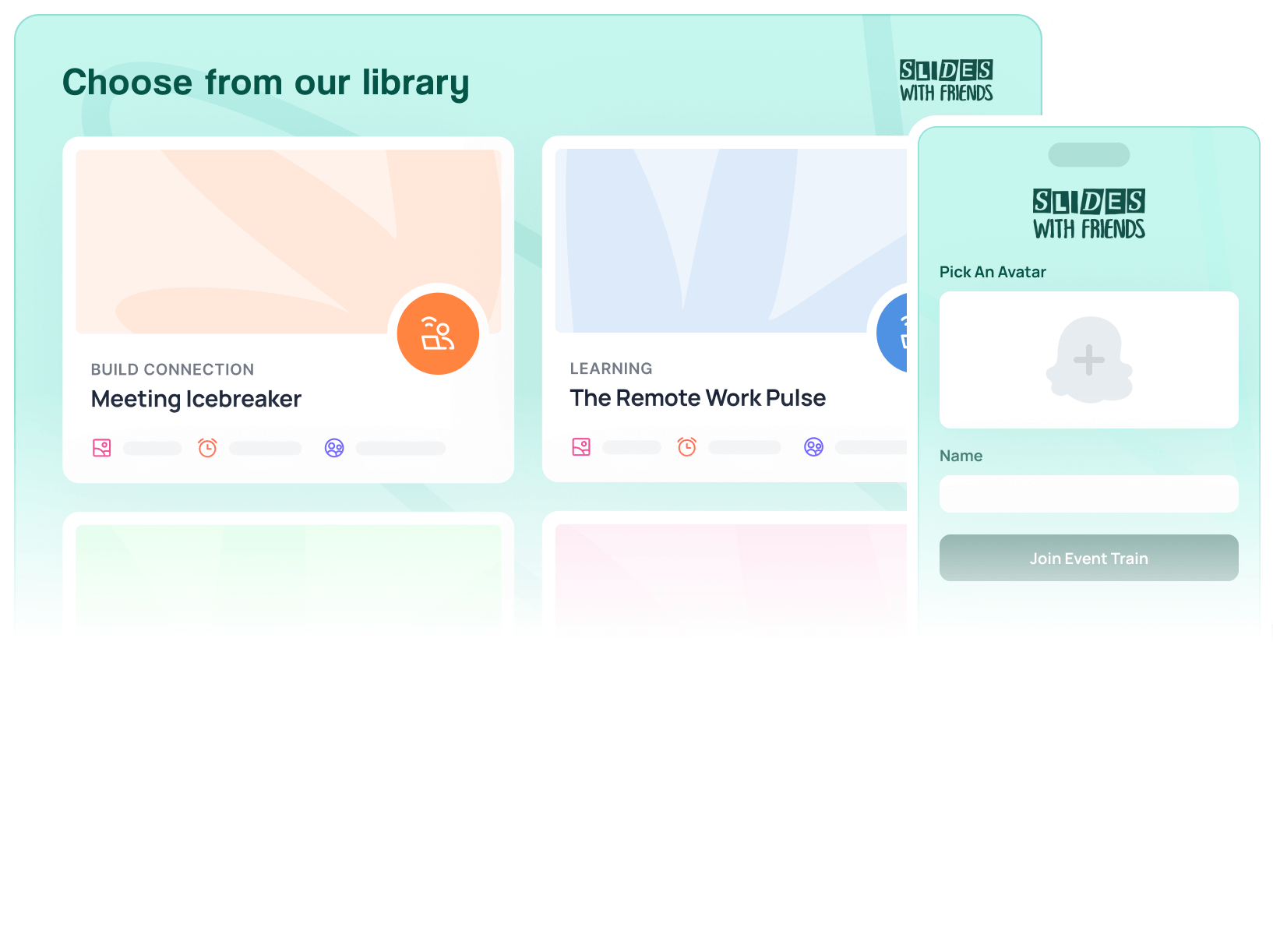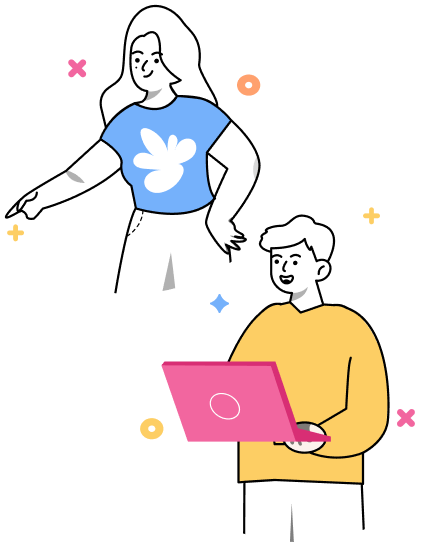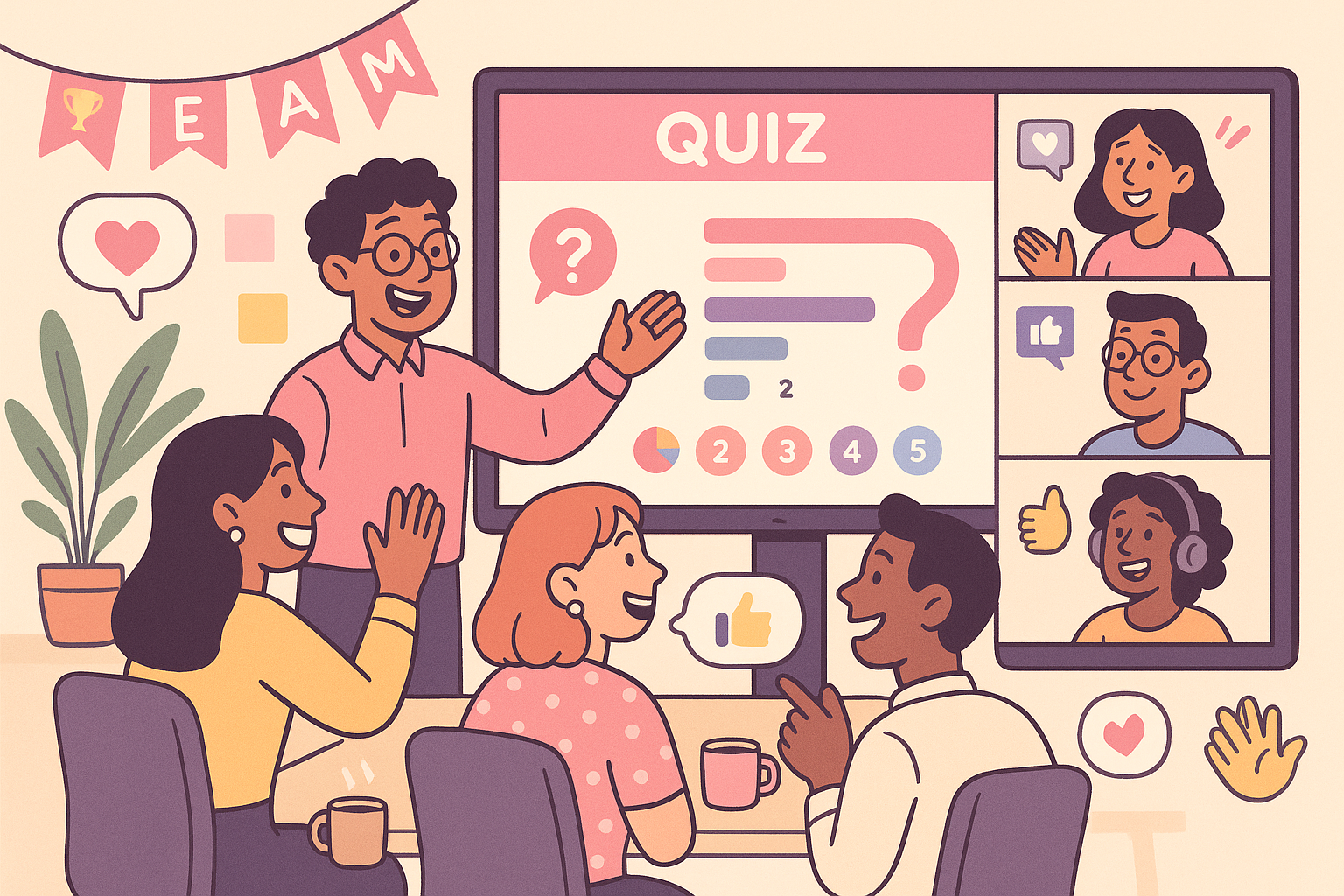How to Host an Exciting Event (as an Introvert)
I'm an introvert and yet I run great events. You can too! Here are specific steps you can take to make your online events / meetings / zoom calls / remote get togethers fun and exciting!

I'm a small personality. The Zoom mic barely picks up my voice.
And yet, I have hosted and facilitated dozens of zoom/meet/video events where people laughed, joined in, and had a great time. The events I host are high energy, engaging, and keep people coming back for more. I run more of them every week.
Did I overcome my fear and learn to become a great public speaker? Oh no, most certainly no. I remain an unrepentant killjoy. Did I hire an actor / event host? I probably should have done that but still no.
As an introvert, the secret to hosting a great event is to structure it so the excitement is built in. It's all planning.
Knowing exactly how to structure your events to guarantee excitement can be tricky, but that's exactly what I'm going to discuss in the rest of this article.
Some events are performed, others are planned
Some people are naturally excited, bubbly, and aren't afraid to have their own dance party in front of 20 unmoving video boxes; they run great online events even with mediocre content.
You don't need to be a performer, you just need to plan the right details into your event. A well-planned event can do the following with little effort from the host:
- Create a safe environment (lower barriers and set expectations)
- Build in audience participation
- Present content that is funny and exciting

Simple to list out, tough to actually enact. Don't worry, I'm going to give you the answers (and benefit of my research, preparing, and planning) so that you too can host fun events, even without a bubbly event-running personality.
What actually makes an event fun?
Can a great magician make a party fun and memorable? Does a deep, thoughtful conversation with a few good friends do the same thing? How about a party with a magician but where you don't know anyone and sit alone in a corner all night?

An extrovert can provide spectacle that can add stimulation, but the most fun events are the ones that are organically exciting because you're participating and feeling part of the group. To be open to having fun when socializing in groups, first we need to feel connection and belonging.
"Our reliance on our group members has exerted a profound influence over our motivation: successful group functioning requires that we are motivated to interact, and engage, with those around us. In other words, we need to belong."
Harriet Over, The origins of belonging: social motivation in infants and young children
Once we create feelings of safety and belonging, people feel safe in venturing to participate.

Once people are actively engaged and participating, we need to give them something to play with! This is where content planning comes in. Add levity by throwing in jokes, gifs, or light moments to get people smiling. Build in moments of structured serendipity — play with surprise and controlled confusion to keep people on their toes.

So HOW do we do all of that? Here are the elements of 1) enabling participation and 2) adding lighthearted surprise to any remote event.
How to plan a fun event
First, you remove the barriers to entry. Make it easy to join in and participate. The easier it is, the more people will do it.
Next, you set the expectation. Welcome the first timid foray into unmuting, and you've created an environment of safety for participation. Ask for chats in the side box early on, and you've set the tone of the event to be participatory.
Then, you provide structure. A free form event is fine, but if people don't know each other, a group is large, or they're expecting ~a talk~~, running something without structure will be rough for us introverts. Instead, set up guiderails. People on video calls are amateur bowlers; they need bumpers if we want them to interact a strike. I am sorry for these metaphors.
Make it interesting. Know your audience and make sure what you're saying is relevant to them. Content matters. You knew this already.
Make it funny. For a working definition, let's say "humor" is at base a subversion of expectations (in a light or clever way). Surprise + Levity = Humor. You need all those elements to get people laughing.
Make it exciting. Find elements of fun and excitement by creating space for serendipity, curiosity, and surprise. Help your audience step outside of their comfort zone (safely) to find playfulness.
Ok but don't you need to be friendly and extroverted to do all that??
I thought so too but obviously no (I'm writing this article aren't I). There are tools for this! There are so many! I'm building one myself. We'll use that app, Slides With Friends, as an example for specific how-to's, but this theme is broad and works with many options (I've laid out some favorites, below) and even just on zoom/meet/any video call itself.

Actionable things introverts can do to make an event fun
Here are actual suggestions, examples, and ideas that you can make your own (please, steal them!) for your events, to make them fun even if you're a dormouse like me.
How to remove barriers to entry — for introverts
Give people a sanctioned place and way to interact. If it's not the open floor of the video call's audio, it can be the chat in the zoom meeting, the q&a tab in hopin, or the joined in screen on SlidesWith.
- Early on, coach your audience through how to join in to shared interaction space, whether it's opening the zoom chat box, pointing them to the Q&A tab in hopin, or joining in the event with their phones in a SlidesWith game
- Ask for cameras on
- Mics unmuted (if possible) (best for smaller groups)
Interactions are a go!
How to set the expectation of participation, for introverts
Prime your audience to understand they'll be participating, not just watching, by using interactions early (and bringing them back often).
- Start the event with "where are you right now? type it in the chat." Or "Let's popcorn around the room. Tell us where you're from then throw it to the next person."
- If you're using zoom, let everyone know you plan to use at least one breakout room. Give people a specific topic to discuss, and a set amount of time.
It's even easier when you're using tools! If you're using SlidesWith, just having folks join in on their phones to your event sets this expectation.
- Use your interaction tools right away.
- For instance in SlidesWith use a "pass the mic" slide early on to build in the "popcorn around the room" functionality for you.
How (& why) to add structure, for introverts
Why do so many shy folks like to play Dungeons and Dragons? Because it provides a sturdy framework for whimsy, a safe place for excitement, a defined way of interacting that frees the player of "not knowing what to do." Setting outer boundaries gives people license to explore what's within.
A simple powerpoint or google slides presentation is a good way to enforce structure while giving yourself helpful cues. Just make sure that this structure is also there to govern interaction and fun. Intersperse your content with interaction prompts — don't only present static information.
- Create a presentation or outline in advance using your tool of choice (notion, powerpoint, google slides, SlidesWith, etc)
- Build audience participation into your plan/presentation
- Provide clearly-laid-out ways to interact. (Smaller group? Have folks unmute or use the zoom chat to get responses. Larger group? I'd recommend using an interactivity tool that lets people know clearly how to respond)
How to make it funny, for introverts
If you're a funny person (I know so many hilarious introverts) feel free to add your own humor in. If, like me, people stare blankly at you when you make a joke, let others do the work for you! There are so many great humorous stories and jokes you can find all over the internet.
- Start off with a silly icebreaker question before you dig into your content
- Throw in unexpected jokes or stories to your talk (your own or sourced). Call back to them later for double laughs.
- Add funny images, memes, or relevant comics to your slide deck
How to make it exciting, yes, for introverts
The single easiest way to add excitement and surprise is to play games! Or at least provide your audience game-like dynamics they can play with. Structured serendipity is absolutely a thing, and we introverts love it.

Once you know what you're looking for, it's not hard to add these! Here's some example ideas:
- Add surprise by polling the audience to see which topic you tackle first
- Send folks on a scavenger hunt of their room to bring back the most topic-relevant thing they can find
- Play a quick team building activity before you start
I'm personally a fan of just straight-up playing a game with people during these calls. If not the whole time (eg. for a group happy hour or team trivia night), then to break the ice before we get to the meat. It's not time wasting, it's team building. It creates and strengthens group dynamics, helps people feel like they belong, and engenders positive feelings (hopefully).

There are so many great games you can play! I'm a fan of teambuilding.com for great games (where someone else hires an extroverted actor to run an event for you). Or here are some already-made SlidesWith games you can use to be your own host:
- Happy Hour Hang (a fun-feelings hangout game)
- Tea vs. Coffee (a safe little either/or team bonding game)
- D&D: A magical adventure (a silly team building game)
- Or if your people like a little wicked fun, try Slides Against Humanity (a Quiplash / Cards Against Humanity "make up a funny answer and vote for the best ones" type game).

Tools that can build in participation
Slides with Friends - Think of it like powerpoint meets jackbox games. It's a slide deck where your audience doesn't just watch your content, they join in and play along! You can create (or grab a pre-made) presentation, invite your audience to join in on their phones, then they can answer polls, vote, send in notes, respond to trivia questions... The interaction and game dynamics are built in!
Sli.do - An interactive slide deck builder for conferences and large group polling. (Yes these guys are a competitor of ours, but our goal is to help you make your events great no matter what!)
Kahoot - A great quiz-maker and game-builder. Especially good for teachers, team builders, and people training or onboarding when you need to make a quiz.
Platforms that create more serendipity
Hopin - an event hosting platform that builds in many "stages" your audience can visit, and has a tab for chat and q&a more available than zoom's.
Mixily - billed as a place to "allow your communities to connect online in a persistent venue designed for your brand" this customizable event venue is new but promising!
icebreaker.video - bigger groups get to interact one on one or in small groupswith breakout room type functionality front & center. Nt great for prepared events or talks where you'll be presenting to a group and not needing them to interact with each other.
Mixily - billed as a place to "allow your communities to connect online in a persistent venue designed for your brand" this customizable event venue is new but promising! (Plus we love female founders)
Remo - Trying to make "networking in a large conference room" a remote capability. You can click in to tables to join small groups. While presenting, you can still talk to the whole room / share your screen to the whole group in each (if you're doing a talk in advance of a networking session, for example).
Up next 👉 Stay tuned for what makes a good remote game
Sign up for our newsletter to get more helpful content like this.


Ready to ditch the dull, and run team sessions that people will actually enjoy?
Get started with a Slides with Friends deck in no time. We’ve got all the interactive features you need in one easy-to-learn, easy-to-set-up tool.















